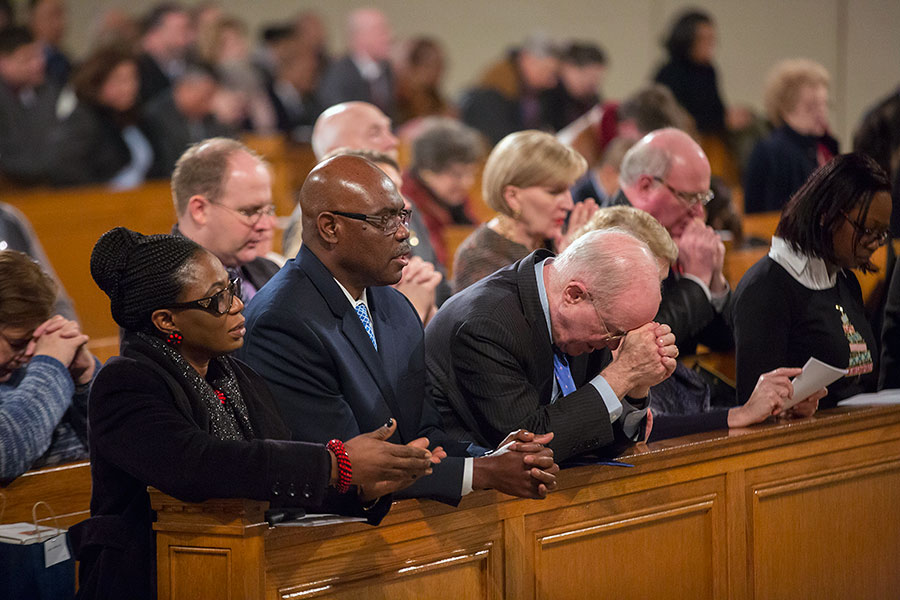 The term “New Evangelization” was originally used by Pope St. John Paul II and Pope Benedict XVI to refer to the unique situation of the West, wherein we were not preaching the Gospel to a people who had not heard it, but were instead “re-presenting” the Gospel to a culture that had once embraced the Gospel and later rejected it. In essence, the term means “re-evangelization.”
The term “New Evangelization” was originally used by Pope St. John Paul II and Pope Benedict XVI to refer to the unique situation of the West, wherein we were not preaching the Gospel to a people who had not heard it, but were instead “re-presenting” the Gospel to a culture that had once embraced the Gospel and later rejected it. In essence, the term means “re-evangelization.”
In his “Latin Letters,” C.S. Lewis quipped that while the ancient Europe encountered by the Apostles and the early Church was a virgin awaiting her groom, Jesus Christ, modern Europe is an angry divorcée.
Reaching this quite different audience, of course, would require adjusting the way in which the message was delivered. “New Evangelization” was the phrase used to signify this.
However, many have taken up the phrase in a less restrictive sense and use it in the marketing sense of “new and improved!” This has opened the terminology to abuse and misunderstanding such that it comes to mean that we must mimic secular marketing principles and “mega-church” tactics. To some, it also means that we must alter the message of the Gospel by emphasizing what is popular and pleasant, while minimizing what is challenging and countercultural.
“Welcoming” has become the watchword for many in world of the misconstrued “New Evangelization.” Being welcoming is most often used to mean being nice, pleasant, unchallenging, and completely inoffensive. The only problem with this is that Jesus, as we shall see, wouldn’t qualify for membership on such an evangelization committee.
As a kind of admonition and corrective to much of this, Eric Sammons wrote a few years ago, The Old Evangelization: How to Spread the Faith Like Jesus Did. Consider this passage:
We have a simplistic notion of what it means to love our neighbors. We think of it strictly as being nice to them. Yet … Jesus rarely ever appears “nice” as we moderns would define it. On the contrary he is usually abrupt, sparing with compliments, and willing to confront others directly about their failings. He appears not to follow Dale Carnegie’s advice about “how to win friends and influence people.” Yet he has a deeper love for every individual than we will ever imagine (pp. 51-52).
It would seem that Jesus never got the memo when it comes to many modern notions of evangelization. To be sure, many found in Jesus remarkable love and healing, but it was not the sort of saccharine and soft love (understood as mere kindness) that so many think of today. It was a strong, vigorous love. It was providing true healing rather than mere emotional relief.
Healing often requires difficult surgeries. Healing can hurt. It can disclose deep drives that require strong rebuke and aggressive therapies. Many people are looking for relief, but not healing. Jesus was in the healing business and was more than willing to assert that the cross was the necessary remedy for what ails us. A lot of this does not sit well with the welcoming, pleasant paradigm of evangelization.
In his book, Mr. Sammons goes on to remind us of the true goal of evangelization:
[We think that] if we are nice enough, everyone will want to be our friends. But that was not goal of Jesus Christ. His goal was to covert sinners, to rescue souls from damnation and bring them to their eternal reward in heaven (p. 52).
True spiritual health and final salvation are the goals. Hospitality and making people feel good and welcome have a place initially, but it’s a little bit like the dentist’s office. A nice waiting room, pleasant hygienists, soothing music, and a smiling dentist are all good, but once the pleasantries are accomplished, we have to talk about dental health and get down to the business of teeth cleaning, and checking for cavities and gum disease. If a dentist sees problems and says nothing because niceness is his goal, he is not being nice or compassionate at all. Indeed, by his silence, he is guilty of serious malpractice and unworthy of his title, Doctor of Dental Surgery (DDS).
It is the same with an evangelizer. An evangelizer is unworthy of the title if he leaves the call to repentance and conversion unspoken. Pleasantries and a welcoming environment have their initial place but if that is all there is, then there is no true evangelization taking place and it is outright malpractice on the part of the evangelizer, parish, or Church.
True love for others desires what is best for them, not merely what is apparently good or pleasant in the moment. The fundamental kerygma (Gospel proclamation) is summarized as follows: “Repent and believe the Gospel” (Mk 1:15). These were the opening words of Jesus’ public ministry of evangelization. I seriously doubt that most parishes would even consider such a proclamation as central to their evangelization program.
In modern settings (and probably in Jesus’ day), “Repent” is not exactly a “welcoming” word, but it is a loving word nonetheless. “Repent” suggests (actually, it outright says) that there are problems and that changes are needed. Yes, there are some problems that need attention and some drives that must be called sinful whether or not it is politically correct or popular to do so. The transformative Word and grace from God can heal and perfect us, but we must come to believe the Gospel. To believe the Gospel is to accept the wisdom of the cross, which is absurdity to the world.
Thus, “Repent and believe the Gospel” challenges; it doesn’t always feel welcoming. Eric Sammons further notes,
Too many Catholics will avoid tough topics in the desire to remain “welcoming.” But this is exactly where we most fail in evangelization. In order to make disciples, we must be willing to push into uncomfortable areas … Only by doing so will we bring another to confront the truth. (p. 57).
Only the truth will set us free. Care and prudence will assist us in knowing how and when to shift from welcoming to making disciples, but we cannot forever remain in welcoming mode and call it true evangelization. The true Gospel comforts the afflicted and afflicts the comfortable; each of us, including the people we evangelize, is a little bit of both.
Be careful, then. The term “New Evangelization” is not always rightly understood.
I recommend Eric Sammons’ book as an important help in understanding that the “New Evangelization” cannot exclude the “Old Evangelization” established by Jesus and the Apostles, which must remain our truest model. It is not that there are no insightful aspects of the “New Evangelization” Just be careful not to embrace the new so much that the old is repudiated. Jesus’ approach was quite different from many versions of the “New Evangelization.” It would be an ironic twist if Jesus and His methods were not welcome in your warm, embracing, and welcoming parish.
At work here is the supreme evangelizer, even though He breaks almost every modern rule:







